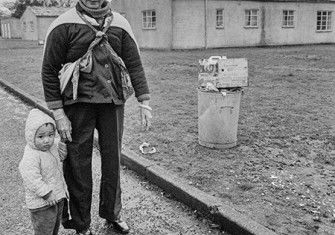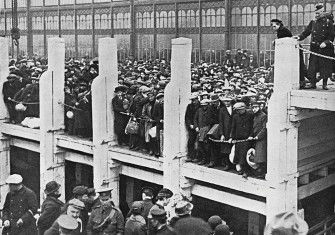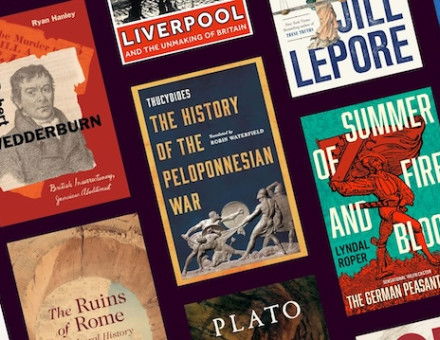‘The Alienation Effect’ by Owen Hatherley review
The Alienation Effect: How Central European Émigrés Transformed the British Twentieth Century by Owen Hatherley follows in the footsteps of those who fled fascism.

Perhaps you’ve heard the stories about those years when northwest London was home to so many German-speaking refugees that bus conductors, when pulling up to the top of the Finchley Road, would call out: ‘Finchleystrasse! Passports please!’ Hampstead had, since the Nazi rise to power in 1933, become an intellectual and social hub for those fleeing fascism in Central Europe: Jewish people, leftwing intellectuals, avant-gardists, and more, all of whom brought something of the continent’s radicalism with them. By one estimate some 25,000 German speakers had moved to Hampstead around this time, as Owen Hatherley notes in his new book, The Alienation Effect. Downshire Hill, in particular, became the ‘unlikely fulcrum of the displaced leftist aesthetes of Weimar, “Red Vienna”, and golden-age Prague’. Here the Austrian Expressionist painter Oskar Kokoschka rubbed shoulders with Jewish-German writer Fred Uhlman, Berlin’s antifascist photomontage artist John Heartfield, Bulgarian-born author Elias Canetti, and the Russian sculptor Naum Gabo, who regaled his London friends with tales of Moscow. Some of these émigrés remained in England; others returned to Europe after the war, or continued on to the US. Yet it is a generation that made a lasting mark – not least, as Hatherley observes, in the fact that Hampstead has the highest density of 1930s modernist houses in Britain.
Finchleystrasse is just one of the stops in Hatherley’s wide-ranging book, which argues that this émigré generation – mistrusted, mistreated, demonised, even interned as ‘aliens’ after arrival – ended up having a ‘decisive, transformative, and positive effect’ on British culture. In doing so, Hatherley argues, the émigrés brought much-needed radicalism to the insular ‘backwater’ that was interwar Britain. Those continental modernisms were not universally welcomed in a nation still bound to a certain aesthetic conservatism and regular fits of Victorian nostalgia. Their impact proved considerable, however, and not always in obvious ways. The Alienation Effect sets out to recover this impact from the 1930s until the 1980s, when the neoliberal era ushered in a new cultural transformation of its own.
Setting aside the domains of science, music, and literature – as well as academia, where the émigrés’ influence was notably more conservative – Hatherley focuses his account on the visual arts and architecture. ‘I want to stress’, he writes early on, ‘the way in which they upset the hierarchies of this class-ridden island, rather than reinforcing them; and the ways in which they cast onto Britain what Bertolt Brecht called, in a new German word, a Verfremdungseffekt – an “alienation effect” – in such a way as to render what would otherwise seem normal and uninteresting into something strange and unusual.’ Where Perry Anderson has previously argued that Britain had a tranquillising effect on Central European exiles, who generally abandoned radicalism to bolster local conservatism instead, The Alienation Effect seeks out instances where émigrés were indeed able to realise their ideas on British soil – or where different cultural traditions combined to new effect. Hatherley offers eloquent accounts of the British careers of Ernő Goldfinger, Nikolaus Pevsner, and Eva and Walter Neurath, Red-Vienna alums whose publishing house Thames & Hudson brought the world of art to the masses at an affordable price point. Yet he also describes comparatively lesser-known figures such as the sociologist and urban planner Ruth Glass – who coined the term gentrification – and the painter Eva Frankfurther, who documented multicultural East London in the 1950s.
One of the book’s great strengths is its willingness to search high and low for material. Hatherley is always ready to leave Greater London and to celebrate those émigrés who did likewise, particularly those whose documentary impulses led them away from England’s symbolic centres of power and towards the mines of South Wales or Durham’s coalfields. Ruth Glass’ first major urban study was of Middlesbrough. The East Midlands, ‘one of the places where history is not usually looking’, stars as the setting for a 1944 exhibition of Central European modernist art at the Leicester Museum and Art Gallery. Particular pleasure is to be found in the Central European origins of cultural phenomena seen as consummately British, from the Britain in Pictures series of the 1940s – produced by a team of mostly female émigrés – to James Bond film sets and Judith Kerr’s children’s books. The Penguin Pool at London Zoo is an émigré achievement, too.
Hatherley is an insightful critic. A self-declared ‘sentimental English socialist’, he wears his politics – and his open disdain for Little-England nostalgia – on his sleeve. At times, however, the book’s argumentative overcoat does not seem a perfect match for its contents. Hatherley can seem distractingly committed to a dichotomy between regressive British backwardness and the cosmopolitan radical excellence that emanated from the Continent. As an Australian, I’m personally not opposed to the odd spot of pom-bashing. But Hatherley’s constant insistence on émigrés positively liberating Britain – usually against its will – from its natural inborn backwardness occasionally flattens his material. For one, it risks idealising Mitteleuropa, as if Berlin, Prague, Budapest, and Vienna were not also home to their fair share of small-mindedness, snobbery, and conservatism. Central Europeans’ interest in anything British is usually presented as odd or even regrettable; Bauhausler László Moholy-Nagy wanting to photograph Eton, for example. (Why shouldn’t he? Eton is bizarre.) Only briefly do we hear about those Britons who did make themselves open to new cultural currents – people like Trevor Thomas, the young curator of that Leicester exhibition. It is possible to make a case for immigration in general, and these immigrants in particular, while also acknowledging that the occasional pommie has a head on their shoulders. Hatherley himself is evidence for that.
-
The Alienation Effect: How Central European Émigrés Transformed the British Twentieth Century
Owen Hatherley
Allen Lane, 608pp, £35
Buy from bookshop.org (affiliate link)
Alexander Wells is a writer based in Berlin.






